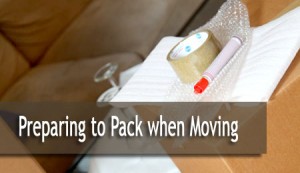 Leaving home for the first time in your life to start living on your own is something really exciting! Just imagine all the things you’ve always wanted to do in your life on your own. But we all know that this is true. What we tend to forget is that leaving home out is always related to moving out. And the latter one inevitably goes with activities like planning, organizing, scheduling, budgeting, cost optimizing and many more. Before you jump into the unknown and learn all about moving out the hard way, just read the below first time moving tips and get prepared!
Leaving home for the first time in your life to start living on your own is something really exciting! Just imagine all the things you’ve always wanted to do in your life on your own. But we all know that this is true. What we tend to forget is that leaving home out is always related to moving out. And the latter one inevitably goes with activities like planning, organizing, scheduling, budgeting, cost optimizing and many more. Before you jump into the unknown and learn all about moving out the hard way, just read the below first time moving tips and get prepared!
Manage your finances
Moving is an expensive adventure and you need to plan your costs way ahead to avoid financial hardship. Moving costs are numerous and fall in many categories but one should plan not only the direct but also the indirect moving related expenses, such as those for food during the move, hotel room rentals for long distance move, optional moving insurance, documents issue and so forth. The direct moving costs will vary upon three major factors – the type of move (local, intercity, interstate, long distance, international), the distance and the size of your household. Different moving companies in different states will charge differently, but on average a two-men-and-a-truck will ask for an hourly rate between $70 and $100. Long distance moves are typically charged anywhere around $0.60 per pound.
To get a close idea on how much the move will eventually cost, make a research among several moving companies. Fill in free moving quotes on movers’ web pages, choose different sized companies, make phone calls and ask all the questions you may have after filling the quotes like charges for packing materials and fuel charges.
Tips to save on moving costs:
- Get packing materials for free – find some old carton boxes, packing paper and bubble wrap in the nearby supermarkets and stores. They’ll gladly giveaway any unused old packaging that will be thrown away anyways.
- Pack items yourself – most of the household items can be easily packed for transportations without special skills. Leave only high-valued or fragile items in the hands of packing professionals or get professional advice from movers on how to pack them for safe transport.
- Take some stuff with you – if you are traveling to the new location with your own vehicle load some of the stuff in it. The less you leave to movers, the lower you’ll pay them.
- Sell or donate unnecessary items – moving is probably the best time to get rid of old stuff that is no longer in use and collecting dust in some forgotten corner of your home. Garage sale is a great way to minimize clutter and get some fresh cash as a bonus.
Get organized – make a moving checklist
Creating your own moving checklist does not only help you get organized and make a flawless move, it can also be fun. A well-designed moving checklist helps you visualize all you need to do and when you have to do it. This way you can save on time and, most important, on money. The perfect moving checklist will contain detailed list of all “To Do” things in a strict timely order. When one action is done, mark it down and go on to the next one, until you ultimately find yourself in the comfort of your new dwelling. Here is a list of some compulsory for every moving checklist activities:
- Make an inventory list of all your belongings to be moved
- Put aside all highly valuable items – jewelry, documents and small electronic devices.
- Sort out all items that require special packaging for transportation.
- Get and compare different moving quotes.
- Research selected moving companies – read customer reviews, ratings, ask friends or colleagues for references.
- Contact the respective service providers and seize contracts for electricity, cable TV, internet, etc.
- Make a “First day in the new home” moving kit with personal essentials, such as cosmetics, a handful of sweets, toothpaste and toothbrush, pharmaceutical, etc. You need them to have a normal day before everything is being unpacked.
Alternatively, you can use and broaden if necessary our printable moving checklist.
Practice

Practice is a good way of getting familiar with the unknown and therefore – reducing the stress and anxiety of moving out for the first time.
Yes, that’s right. Olympic champions run thousands of miles out of the stage lights before they appear and break the world record on 100 meters. Practice is a good way of getting familiar with the unknown and therefore – reducing the stress and anxiety. Once you are faced with the need to move out see if you can live on your own and make a trial of your skills for budgeting and doing the housework. Perhaps you can find a friend to live with or get a short-term rental for a few months. An easier alternative is to make your parents let you run the house for a month or two and behave responsibly as long as you possibly can. This will give you a better idea of what it is about living no your own and help you put your feet firmly on the ground. Meanwhile, make a comprehensive list of what items you won’t have in the new home and find ways to achieve them. Those include, but are not limit to: a bed, bed linen, a dresser, night stand, alarm clock, mirror, trash bins, etc.
If you are still uncertain about how to easily fit into your new social environment you can visit the National Housing Institute’s web page at shelterforce.org and get support in fitting in and creating healthy and thriving community.
The above tips will not automatically make your first move out a pleasant fairytale but at least you’ll be more prepared about what to expect and where things might go wrong. Of course, there’s always a smooth way around – if you are not on a tight moving budged call a reliable, professional moving company and get a full moving service. Professional experienced movers will guide you every step of the way and your first move out will most certainly go flawless from beginning till the end.

